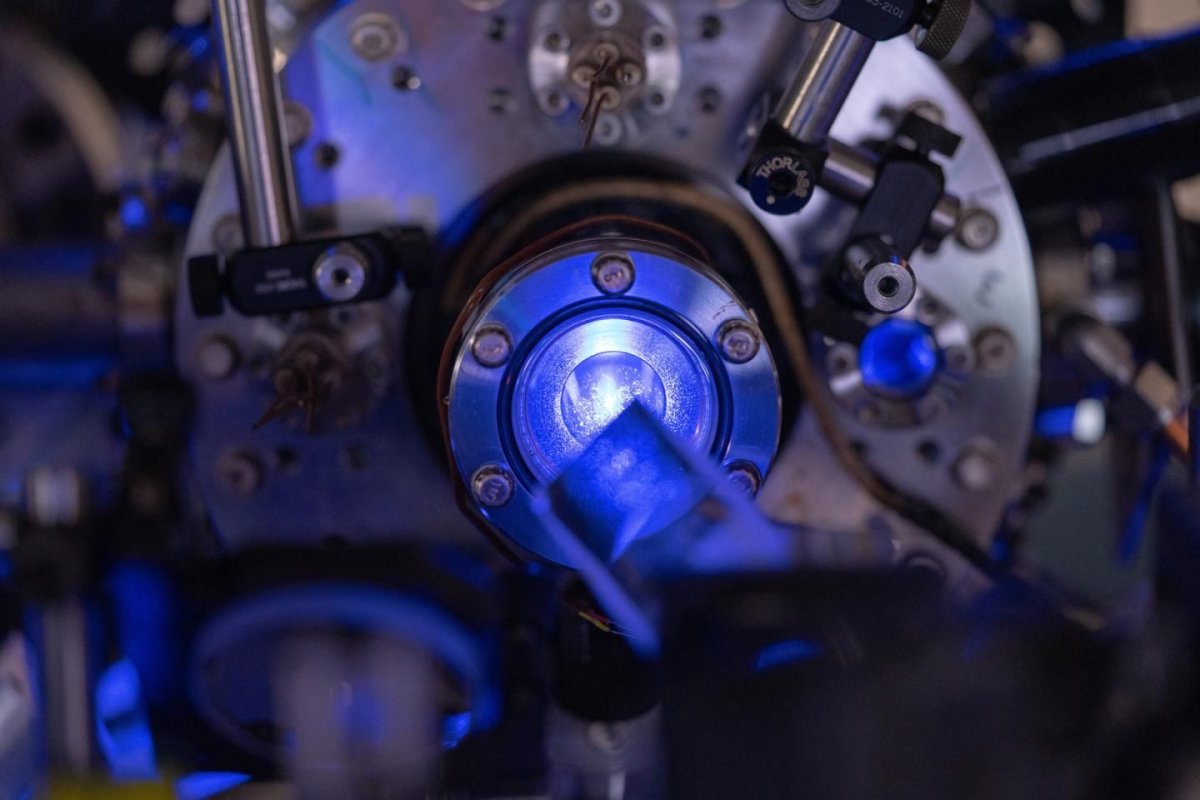For the first time, scientists have created laser-cooled neutral plasma. The temperatures reached are around 50 times colder than that of deep space, with the plasma reaching -273C.
Normally we think of lasers as being used to heat things up. However, laser cooling is the opposite—using laser light to cool down a physical system. When scientists worked out how to cool atomic gases, it opened up the "ultracold world," Tom Killian, of Rice University, told Newsweek. This, he said, allowed them to cool down atomic gasses to about a millionth of a degree above absolute zero, "where the bizarre laws of quantum mechanics take over," he explains.
Killian, Thomas Langin and Grant Gormon, also of Rice University, worked out a way to apply the tricks of laser cooling to ions in a neutral plasma. Plasma is one of the four fundamental states of matter, after solids, liquids and gases. It is often produced in extremely hot places—like the Sun, for example.
In their experiment, Langin used a set of 10 lasers of different wavelengths to cool the neutral plasma. They vaporized strontium metal with one set of lasers, which trapped and cooled a set of atoms. They then ionized the the ultracold gas with a second set. This second pulse converted the gas into a plasma, which expanded rapidly and then dissipated.
"If an atom or ion is moving, and I have a laser beam opposing its motion, as it scatters photons from the beam it gets momentum kicks that slow it," Killian said in a statement. "The trick is to make sure that light is always scattered from a laser that opposes the particle's motion. If you do that, the particle slows and slows and slows."
By cooling down the neutral plasma, the researchers have opened up new possibilities for studying plasmas in extreme environments, such as inside white dwarf stars and in the center of Jupiter. Findings are published in the journal Science.
The immediate applications of this research are not yet clear. The team is now working to make even colder plasmas. "The ultimate limit, unless we discover some clever new tricks, is a temperature of about … about 100 times colder than we have demonstrated." One of the limitations of the research is that the probe to measure temperatures can only go down so far.
"We have just started working with laser cooling," he continued. We will try to push colder. We will try to develop new temperature probes to measure colder temperatures. It is predicted that if we cool far enough without letting the density get too low, the system will form a crystalline plasma, called a Wigner crystal. It is believed that ions in the center of a White dwarf star exist in this state."
Killian said the main goal of laser cooling is to "explore the unknown," adding that "the 'frontier' of cold has always been irresistible for physicists."

Uncommon Knowledge
Newsweek is committed to challenging conventional wisdom and finding connections in the search for common ground.
Newsweek is committed to challenging conventional wisdom and finding connections in the search for common ground.
About the writer
Hannah Osborne is Nesweek's Science Editor, based in London, UK. Hannah joined Newsweek in 2017 from IBTimes UK. She is ... Read more
To read how Newsweek uses AI as a newsroom tool, Click here.








